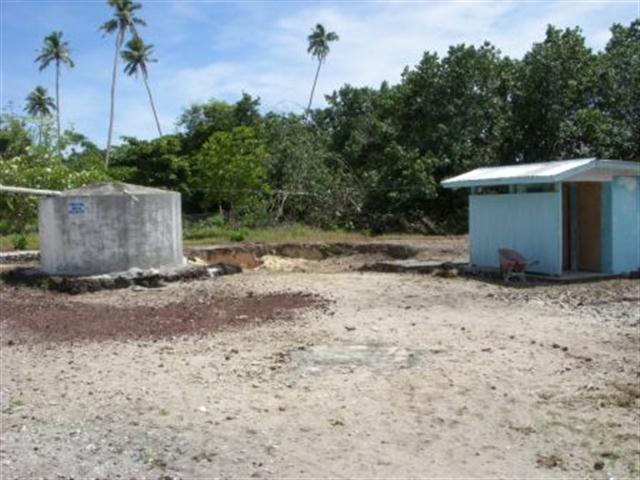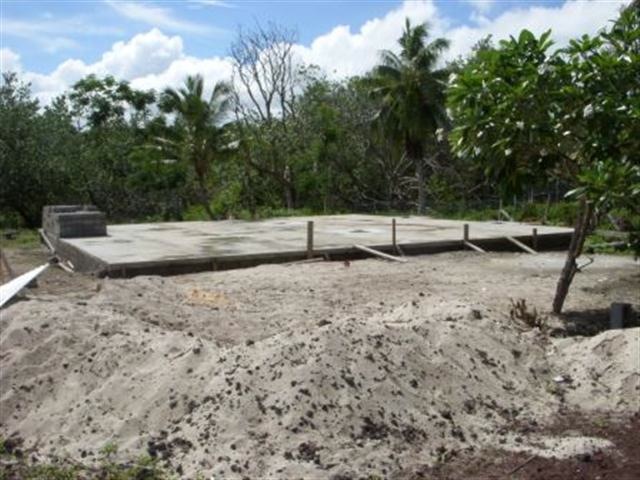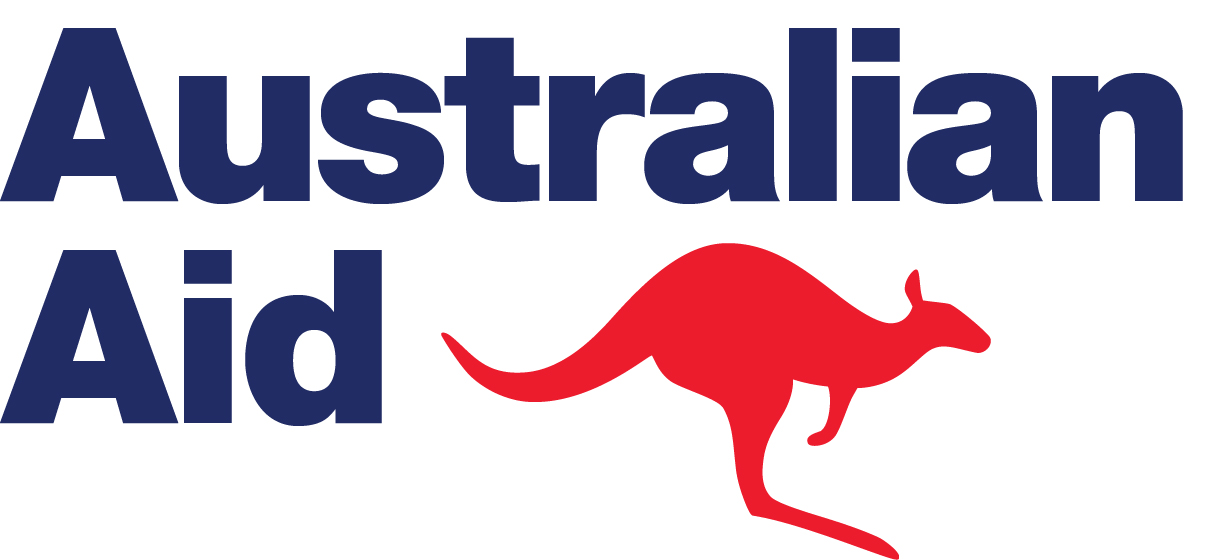CBA Samoa: Lelepa Village
Project Overview
Lelepa village is located on a low-lying coral sand beach, sandwiched between the coast and a disturbed herbaceous marshland. The main coastal road, which is within the coastal and flood hazard zone areas, is the village's connection to vital services such as water, telecommunication, and electricity. This road's poor state increases flooding due to the absence of a drainage system. Flooding leads to salinization in the wetland ecosystem, which adversely affects the natural environment. Additionally, the Lelepa community has weak coastal hazard defenses and frequently-disrupted water accessibility due to cyclones and major flooding events.
This Community-Based Adaptation project increases the Lelepa village's resiliency to climate change by upgrading the inland work road, including raising the road section at the wetland crossing by installing proper drains and culverts at the wetland. A replanting strategy will be implemented with suitable plant species to reduce vulnerabilities to projected future exacerbated flooding. The barrier provided by plants will protect people's land use needs (such as farmland) and diminish salinization. The restoration of coastal defenses will be achieved via vegetation planting, which is to serve as a structural protective wall for the local village spring.
* This project is part of UNDP's "Community-Based Adaptation" portfolio. *
Project Details
Lelepa village sits in northern Savaii island, Samoa. It is one of seven villages within the Gagaemauga III District, and has a population of 217 people. The village is located between a low-lying coral sand beach and a disturbed herbaceous marshland. The main coastal road, which is within the coastal and flood hazard zone areas, is the village's connection to vital services such as water, telecommunication, and electricity.
A work road also exists inland, in an area that is now being settled by villagers relocating from the coastal hazard zone. This land is used for both residential and agricultural purposes. Should this work road flood, its purpose as an emergency escape route would be eliminated.
With the majority of residents relying on subsistence farming and fishing for their livelihood, the frequent disruptions to their current land uses by climate impacts points to a need for adaptation action. Samoa is projected to experience hikes in temperature as well as increased drought periods, and while precipitation levels are expected to decrease by 49.28mm, there will be more occurrences of high intensity rainfall. Moreover, climate change is expected to bring increased tropical cyclone frequency and intensity. A 47-year event cyclone (like cyclone Ofa) is estimated to have a 65% probability to occur within a 10-year period, with a 35% probability of winds greater than 47 knots in that same period. With regard to tidal surges, it is estimated that a 6.9-meter wave height could occur an average of every 24 years, with a 7.7 meter wave at 30 years and a 9.1 meter wave at 75 years.
This Community-Based Adaptation project therefore aims to strengthen the resilience of the Lelepa Village community by reducing the impacts of climate change-driven flooding and coastal erosion through various adaptation strategies. Village clean-up programs will clean out waste materials dumped in the wetlands and clear outlets and inlets to allow natural flow of wetland water. A strict prohibition on waste disposal—with punishable terms—can be imposed on by the village of Lelepa’s part of a Natural Resources Management Plan. Furthermore, work roads will be elevated to a safe and passable level, and drains and culverts will be properly installed at the wetland crossing to allow free flow of water.
Coastal defenses will be increased by rehabilitating and re-vegetating the coastline. Buffer zones provided by this vegetation will reduce coastal erosion and siltation of coral reefs. To protect the community’s local water supply, protective walls around the village pool will be reconstructed. Finally, community members will be engaged in awareness-raising programs that focus on climate change risks and adaptation options.
Key Results and Outputs
Outcome 1.0 (CBA-funded): Enhance resilience of inland ecosystems to Climate Change induced flooding.
Plant appropriate wetland vegetation along wetland banks/edges to reduce flooding (Output 1.1). Institute village clean-up programs to remove dumped waste, allowing for natural flow of wetland water (Output 1.2). Upgrade and raise the work road to a safe and passable level during significant flooding (Output 1.3).
Outcome 2.0 (CBA-funded): Enhance resilience of coastal ecosystems and communities to climate change impacts
Strengthen coastal defenses with coastal vegetation rehabilitation using appropriate coastal species (Output 2.1). Conduct regular coastal clean-up activities (Output 2.2).
Outcome 3.0 (AusAID): Enhance accessibility to other water supply sources, in case normal
water distribution networks become disrupted.
Reconstruct protective wall around village pool (Output 3.1).
Outcome 4.0 (CBA-funded): Village Capacity Building to better manage local ecosystems for risk reduction
Engage community members in awareness-raising programs focusing on climate change risks
and adaptation options (Output 4.1).
Reports and Publications
Brochures, Posters, Communications Products
PIFs
Project Brief / Fact Sheet
Multimedia
Monitoring and Evaluation
Monitoring and evaluation for community-based adaptation is a new field, and the CBA project is piloting innovative approaches to evaluating the success of locally-driven adaptation projects, and generating lessons to inform ongoing practice.
Key considerations in M&E for CBA include:
- Grounding M&E in the local context: M&E for CBA should avoid overly rigid frameworks, recognizing community heterogeneity and maintaining local relevance
- Capturing global lessons from local projects: CBA projects are highly contextualized, but lessons generated should be relevant to stakeholders globally
- Incorporation of both quantitative and qualitative indicators: to ground projects in tangible changes that can be objectively evaluated, and to capture lessons and case studies for global dissemination
To these ends, the CBA project uses three indicator systems: the Vulnerability Reduction Assessment, the Small Grants Programme Impact Assessment System, and the UNDP Climate Change Adaptation Indicator Framework.
The Vulnerability Reduction Assessment (VRA)
The VRA is a question-based approach with the following aims:
- To make M&E responsive to community priorities
- To use M&E to make projects more accountable to local priorities
- To make M&E capture community ideas and local knowledge
- To gather community-level feedback to guide ongoing project management
- To generate qualitative information
- To capture lessons on specific issues within community-based adaptation
- To generate case studies highlighting adaptation projects
The VRA follows UNDP's Adaptation Policy Framework, and is measured in a series of meetings with local community stakeholders. In these meetings, locally-tailored questions based on standard VRA questions/indicators are posed, and the community assigns a numerical score on a 1-10 scale for each question. Progress is evaluated through changes in scores over the course of implementation, as well as through qualitative data collected in community discussions surrounding the exercise.
UNDP has developed a Users Guide to the VRA (Espanol) (Francais) as a tool to assist practitioners to conceptualize and execute VRA measurements in the context of CBA projects.
The SGP Impact Assessment System (IAS)
The CBA, being a project of the GEF Strategic Priority on Adaptation, aims to increase the resilience of ecosystems and communities to the impacts of climate change, generating global environmental benefits, and increasing their resilience in the face of climate change impacts. To this end, the CBA projects use the SGP's impact assessment system for monitoring achievements in GEF focal areas (focusing primarily on biodiversity and sustainable land management).
The IAS is composed of a number of quantitative indicators which track biophysical ecosystem indicators, as well as policy impact, capacity development and awareness-building.
UNDP Climate Change Adaptation Indicator Framework
CBA projects also track quantitative indicators from UNDP's adaptation indicator framework, corresponding to the thematic area on natural resources management. More information on UNDP's indicator framework can be found on the UNDP climate change adaptation monitoring and evaluation website.
* This description applies to all projects implemented through UNDP's Community-Based Adaptation programme. Specific details on this project's M&E will be included here as they become available. *







